Boeing Starliner returns to Earth after first visit to ISS

Boeing Starliner returns to Earth after first visit to ISS
Boeing's CST-100 Starliner spacecraft undocked from the International Space Station and landed in the New Mexico desert early Wednesday evening, completing the final chapter in the orbital test flight.
Boeing's CST-100 Starliner spacecraft undocked from the International Space Station and landed in the New Mexico desert early Wednesday evening, completing the final chapter in the orbital test flight.
Last week, Starliner launched to the space station from Cape Canaveral, Florida, on a United Launch Alliance Atlas V, arriving at the space station the next day. This was the second time in orbit for the vehicle designed to fly NASA astronauts to and from the ISS, but the first visit to the space station. A 2019 attempt to complete the OFT ended without docking at the ISS because of a computer glitch.
HOW TO WATCH FOX WEATHER ON TV
This time, Boeing is ready to complete all steps of the final test before it can fly astronauts. The milestone test ended with a touchdown in New Mexico. The only passenger onboard Starliner is a manikin named "Rosie the Rocketeer," who has sensors in her seat to collect data to improve the experience for the first human passengers.

Boeing's Starliner spacecraft lands in New Mexico, Wednesday, May 25, 2022.
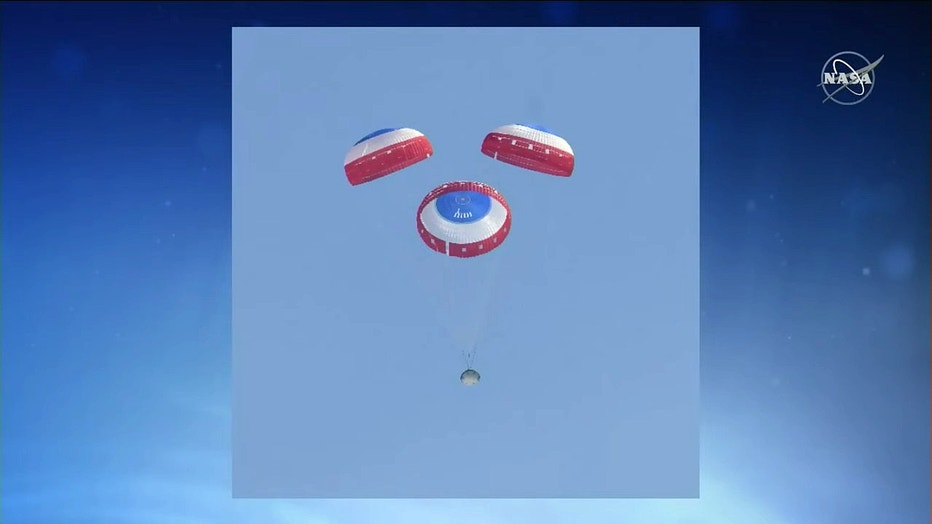
Boeing's Starliner spacecraft lands in New Mexico, Wednesday, May 25, 2022.
The Starliner hatch to the space station closed Tuesday afternoon ahead of its departure.
WHERE DID STARLINER LAND?
Aided by a parachute system and giant airbags, Starliner landed at 6:49 p.m. (ET), ending its six-day mission. Starliner can land at one of five sites in the western U.S. -- two in New Mexico and one each in Utah, Arizona, and California.
Ahead of Starliner's departure from the ISS, mission control designated primary and backup landing sites selected based on the weather forecast. NASA selected White Sands Space Harbor at the U.S. Army’s White Sands Missile Range in New Mexico as the primary landing site for Wednesday's landing.
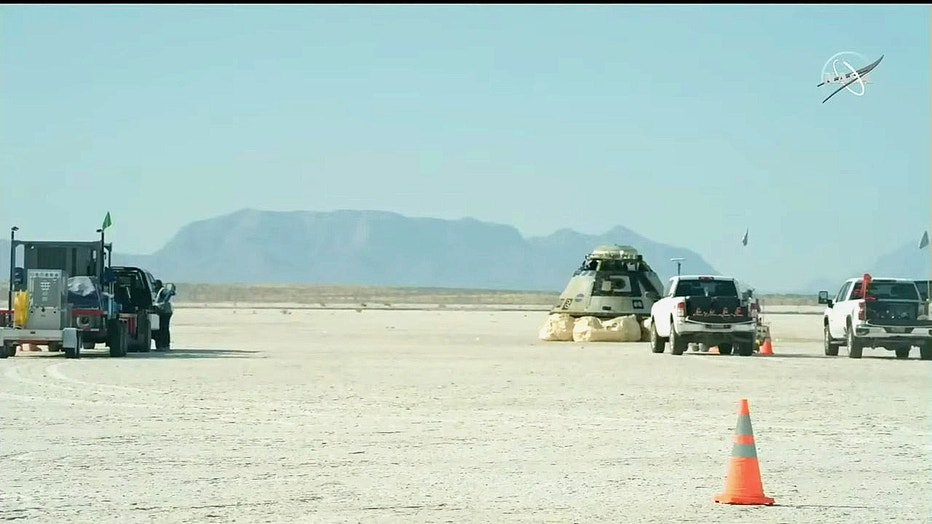
Boeing's Starliner spacecraft lands in New Mexico, Wednesday, May 25, 2022.
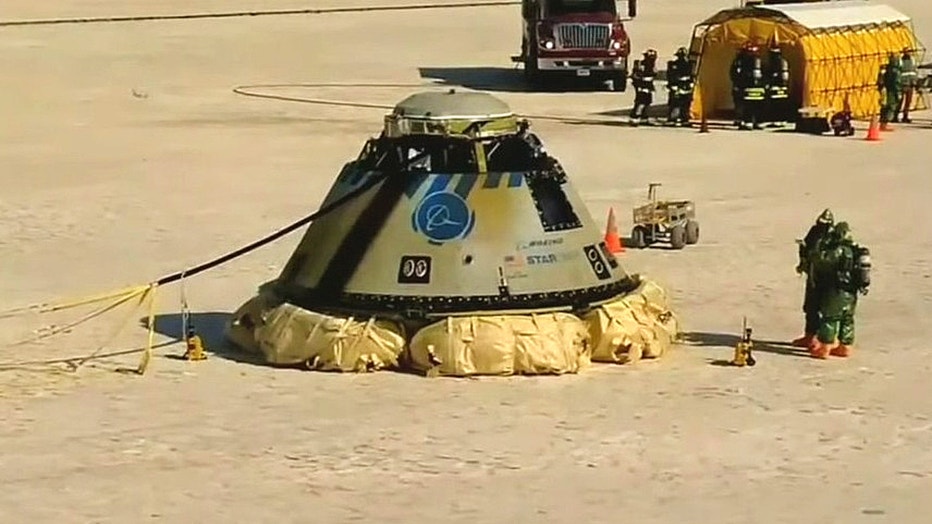
Boeing's Starliner spacecraft lands in New Mexico, Wednesday, May 25, 2022.
As Starliner returned to Earth, it slowed down from around 17,500 mph to nearly zero for a soft touch-down.
The first step was a de-orbit burn before Starliner hit Earth's atmosphere. The spacecraft's heat shield protected the capsule from 3,000-degree temperatures as it barreled through the atmosphere.
Two drogue parachutes deployed at approximately 30,000 feet above the ground before three main parachutes were deployed. At 3,000 feet, airbags inflated around the spacecraft for landing.
NASA and Boeing recovery teams were waiting nearby to collect the spacecraft.
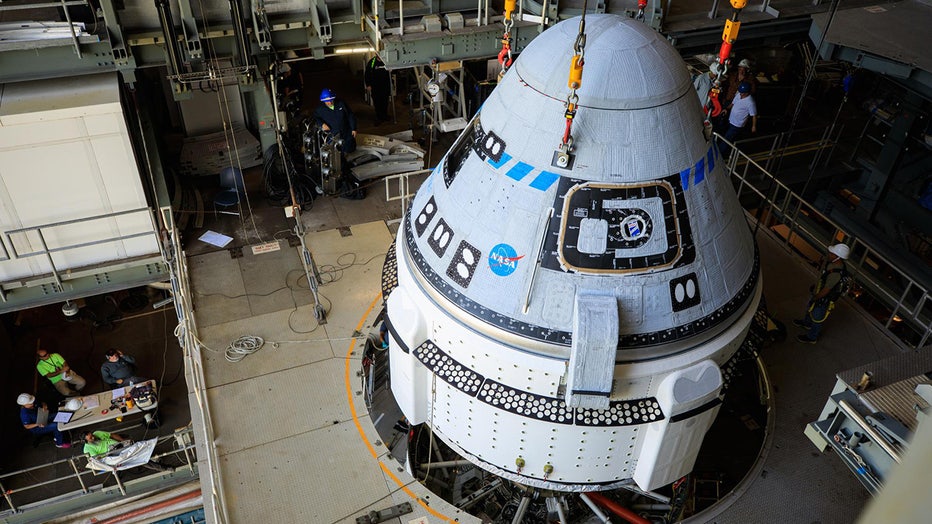
The Boeing CST-100 Starliner spacecraft is lifted at the Vertical Integration Facility at Space Launch Complex-41 at Cape Canaveral Space Force Station in Florida on May 4, 2022, ahead of its second Orbital Flight Test (OFT-2) to the International Sp
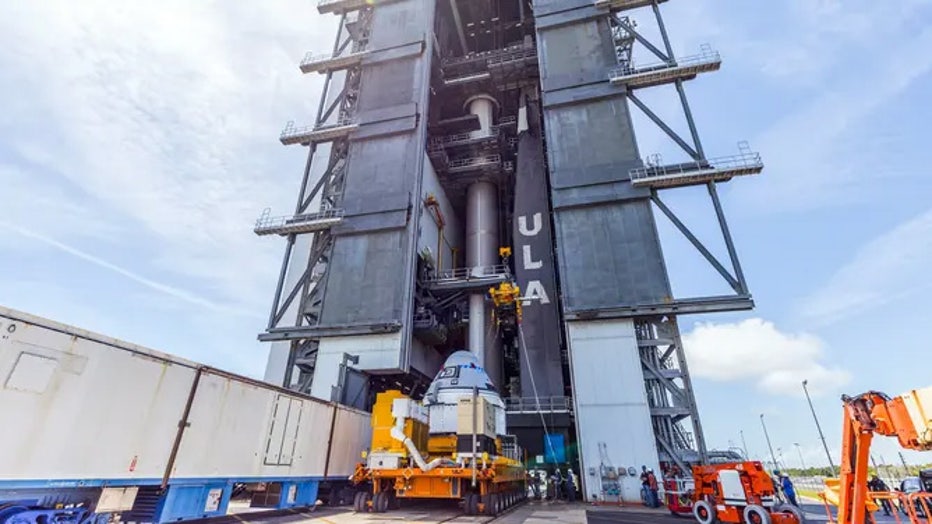
Boeing's CST-100 Starliner arrives at the United Launch Alliance launch complex in Cape Canaveral, Fla. on May 4, 2022. (Image: ULA)
After reviewing the data from the OFT, NASA could approve Starliner to fly astronauts later this year. Boeing developed the spacecraft as part of NASA's Commercial Crew Program. SpaceX's Crew Dragon has successfully launched four long-duration astronaut missions to the ISS for NASA as part of the program.
See full mission coverage, NASA's commercial crew blog, and more information about the mission at: https://www.nasa.gov/commercialcrew

